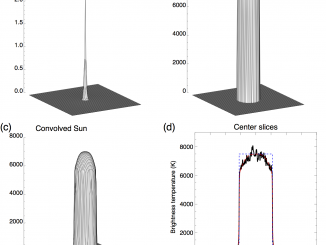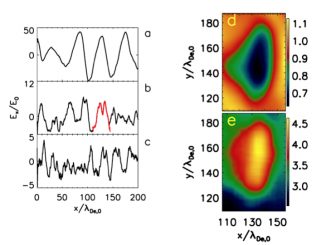The Brightness Temperature of the Quiet Solar Chromosphere at 2.6 mm
by Kazumasa Iwai et al
The brightness temperature of the Sun constitutes a basic property of the solar atmosphere. The main emission mechanism of the Sun at millimeter and submillimeter wavelengths is thermal free–free emission from the chromosphere, which is an atmospheric layer with a temperature ranging between 6000 to 20,000 K. The opacity of thermal free–free emission depends on the temperature and density in the emission region. In addition, the Rayleigh– Jeans law is applicable […]


